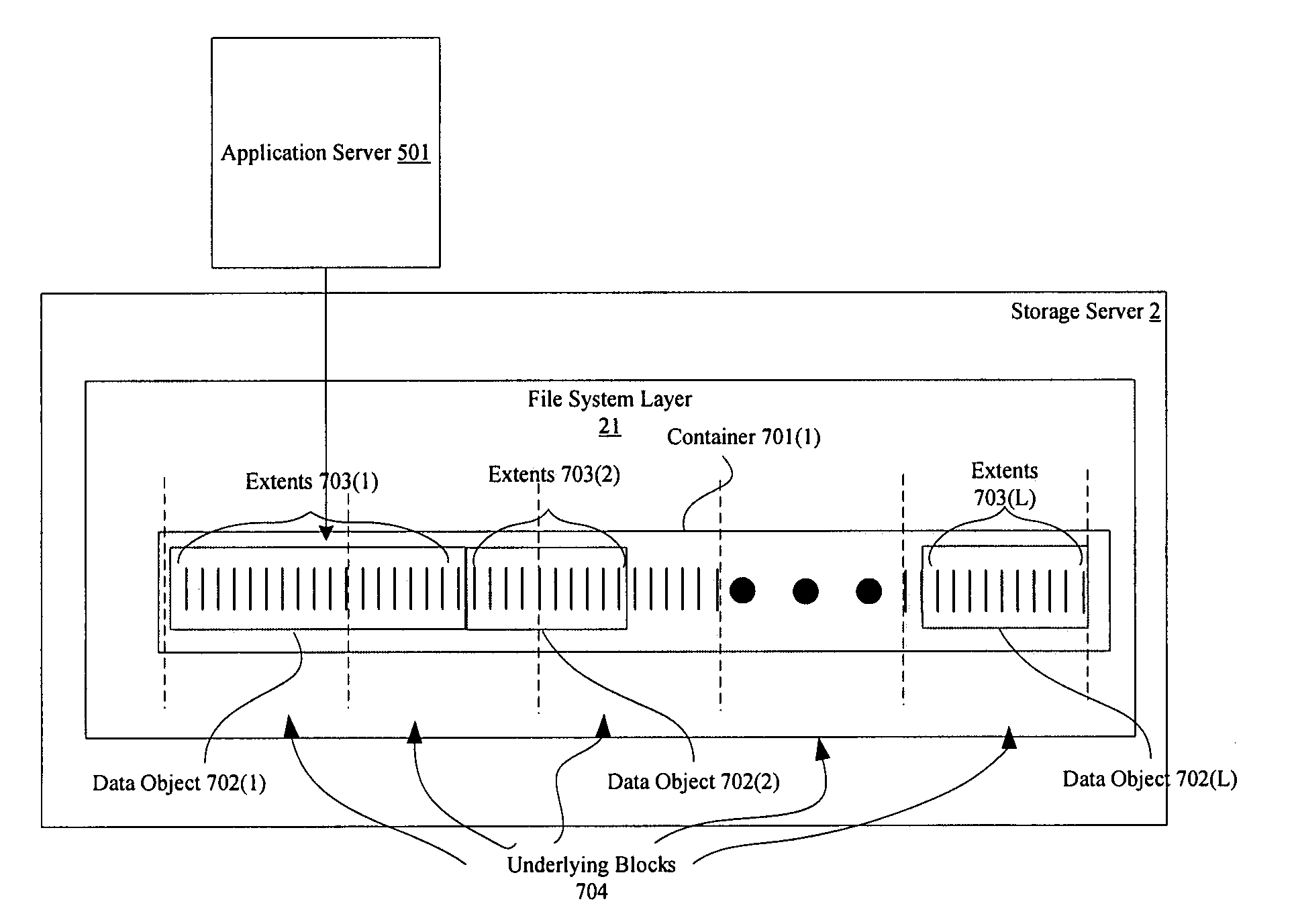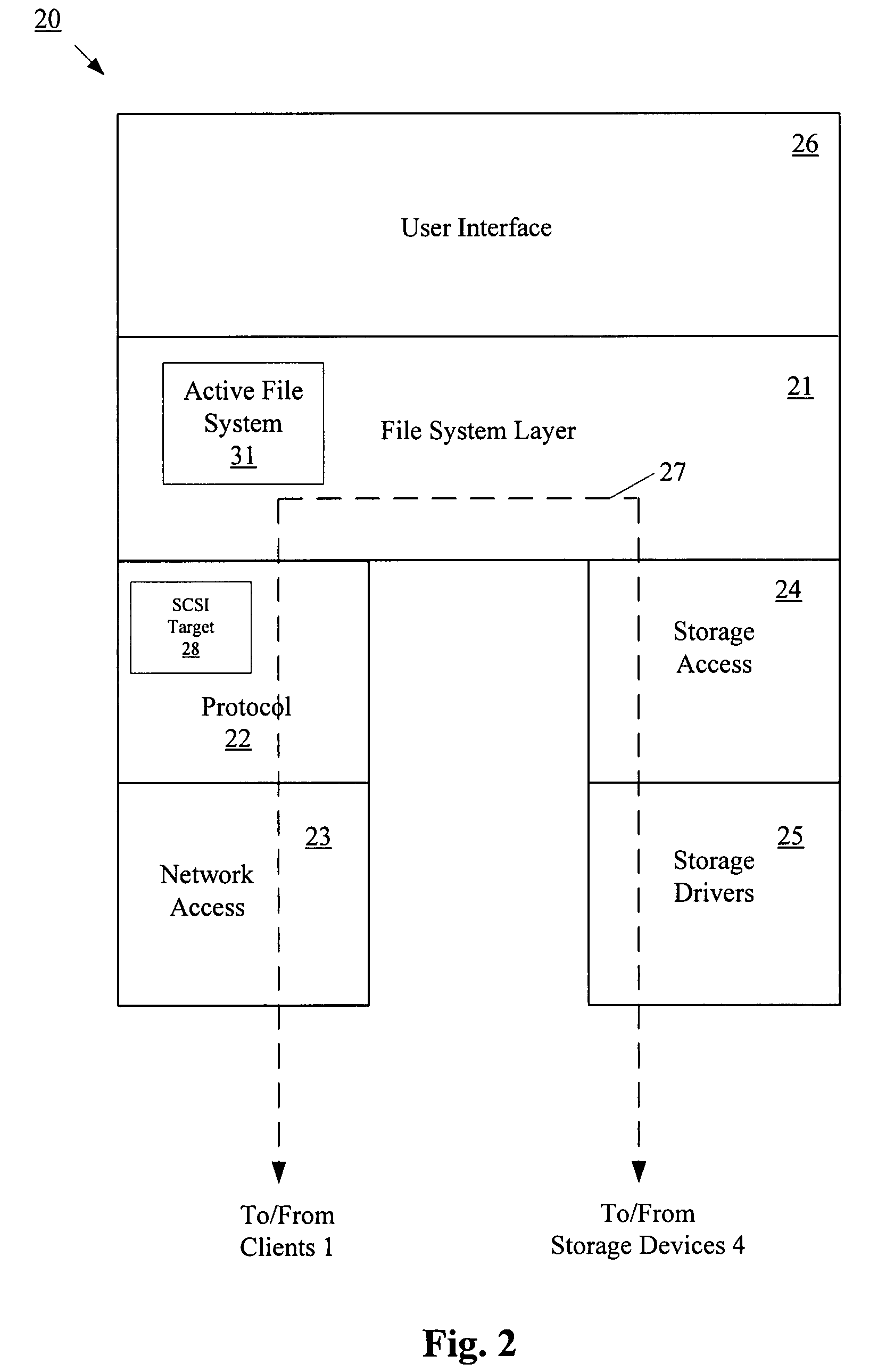Data containerization for reducing unused space in a file system
a file system and data container technology, applied in the field of network storage systems, can solve problems such as inefficient storage space, large storage space waste, and unused space in the file system, and achieve the effects of reducing the number of storage spa
- Summary
- Abstract
- Description
- Claims
- Application Information
AI Technical Summary
Benefits of technology
Problems solved by technology
Method used
Image
Examples
Embodiment Construction
[0028]Described herein are apparatuses and methods for containerization of multiple data objects within a single container. Containerization is the packing of multiple data objects into a logical container, instead of storing each of the multiple data objects in separate logical containers. Also described herein are apparatuses and methods for accessing multiple logical containers and multiple data objects stored within a single container. Also described herein are apparatuses and methods for merging two or more containers that have unused space due to internal container fragmentation.
[0029]The following description sets forth numerous specific details such as examples of specific systems, components, methods, and so forth, in order to provide a good understanding of several embodiments of the present invention. It will be apparent to one skilled in the art, however, that at least some embodiments of the present invention may be practiced without these specific details. In other ins...
PUM
 Login to View More
Login to View More Abstract
Description
Claims
Application Information
 Login to View More
Login to View More - R&D
- Intellectual Property
- Life Sciences
- Materials
- Tech Scout
- Unparalleled Data Quality
- Higher Quality Content
- 60% Fewer Hallucinations
Browse by: Latest US Patents, China's latest patents, Technical Efficacy Thesaurus, Application Domain, Technology Topic, Popular Technical Reports.
© 2025 PatSnap. All rights reserved.Legal|Privacy policy|Modern Slavery Act Transparency Statement|Sitemap|About US| Contact US: help@patsnap.com



